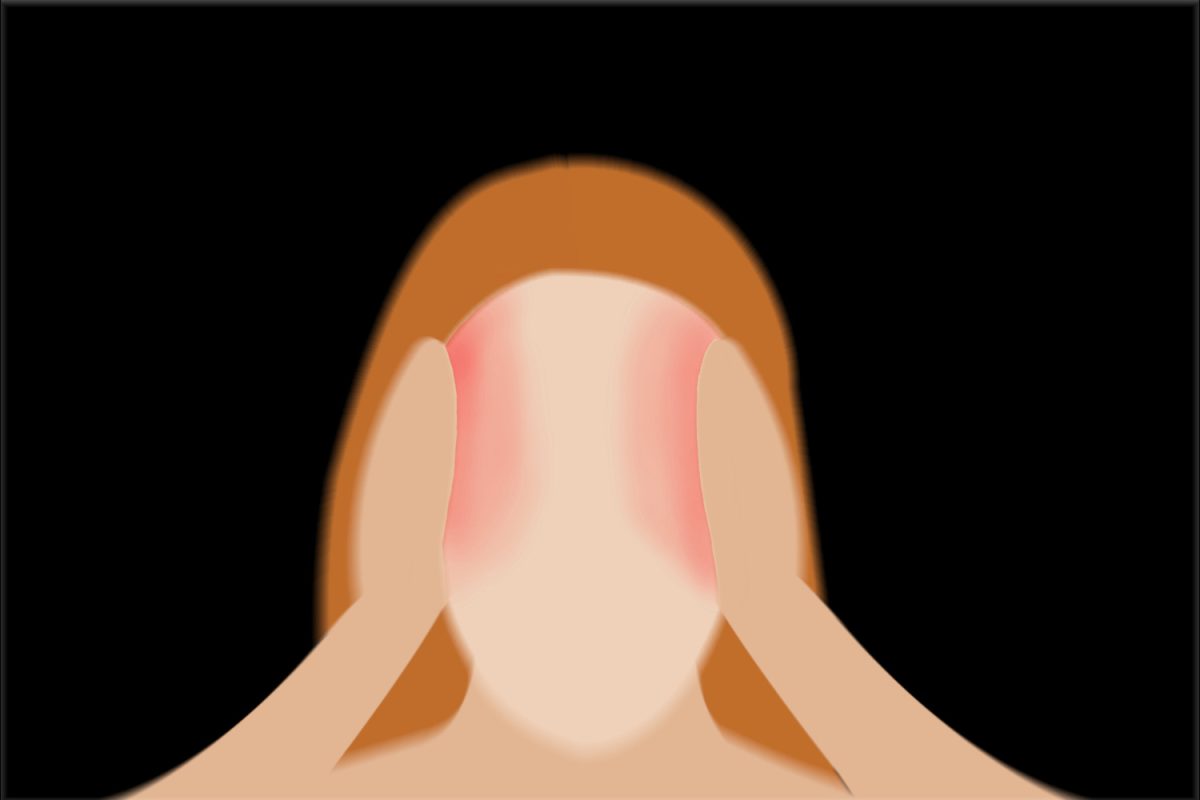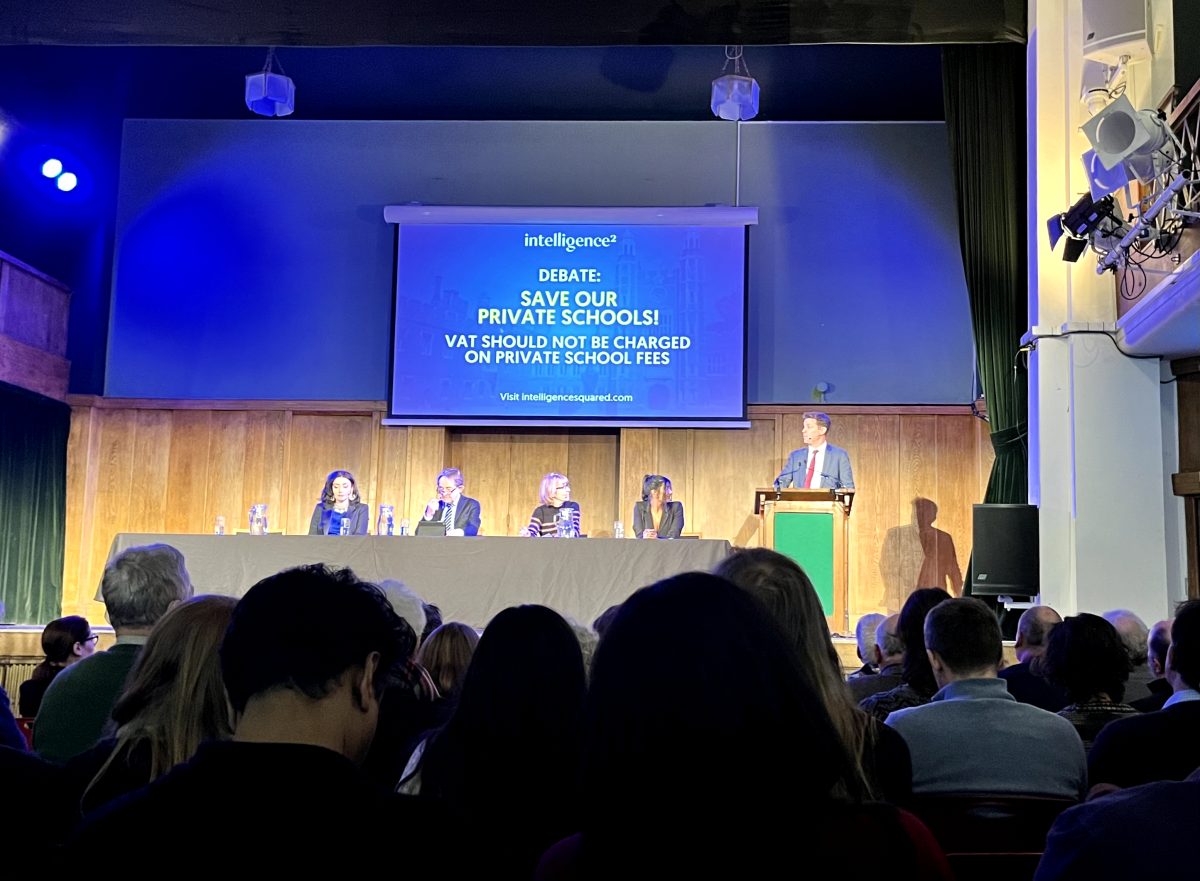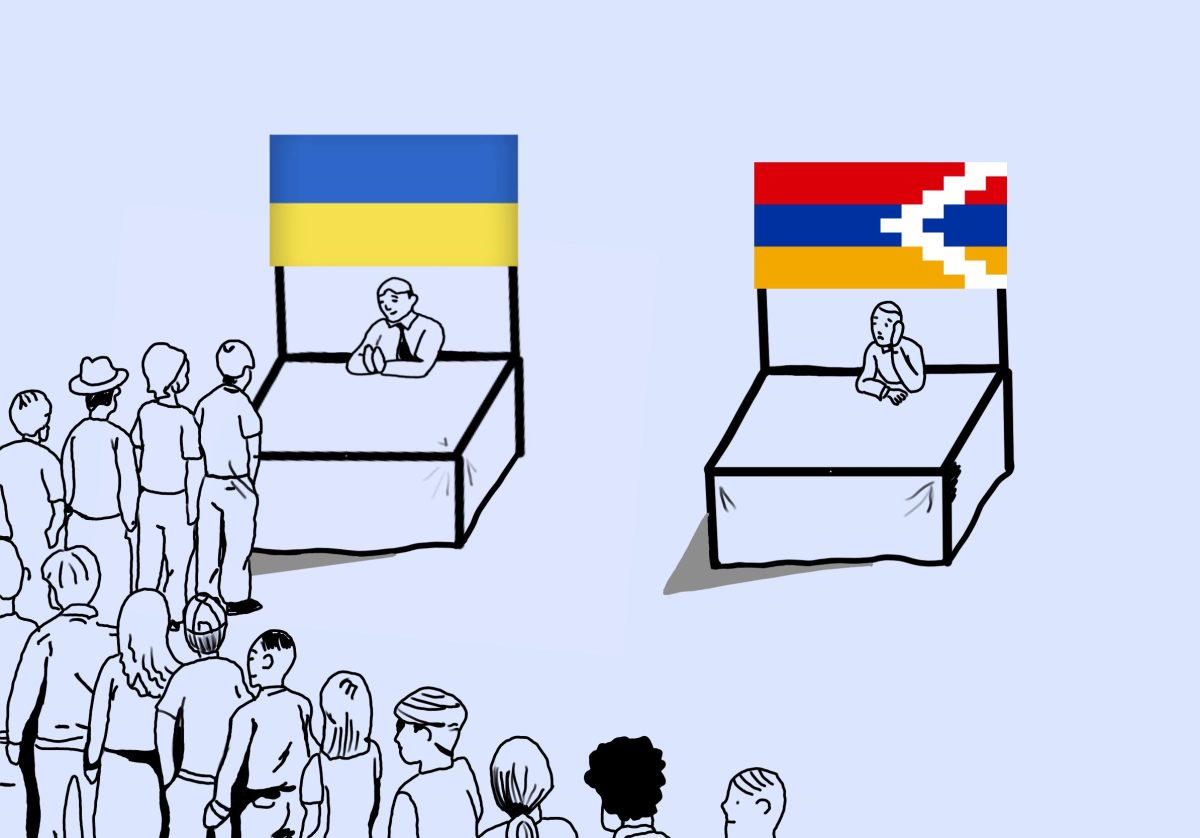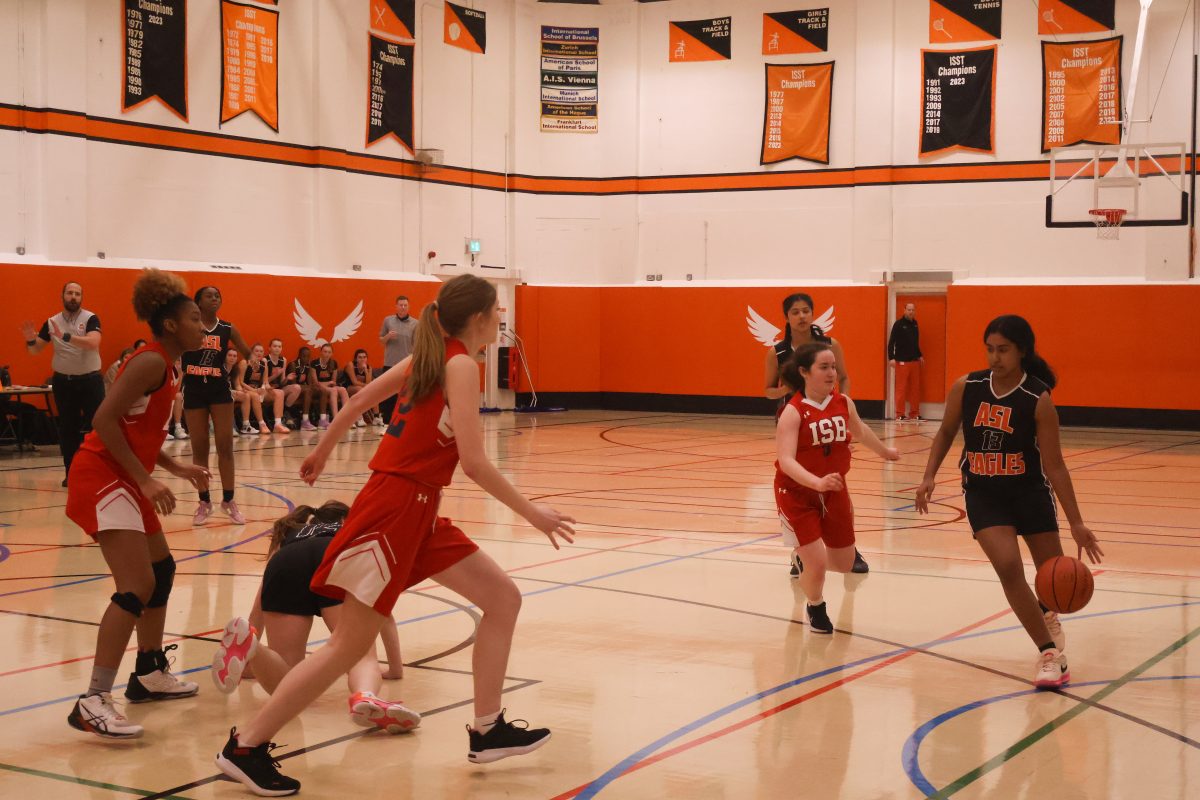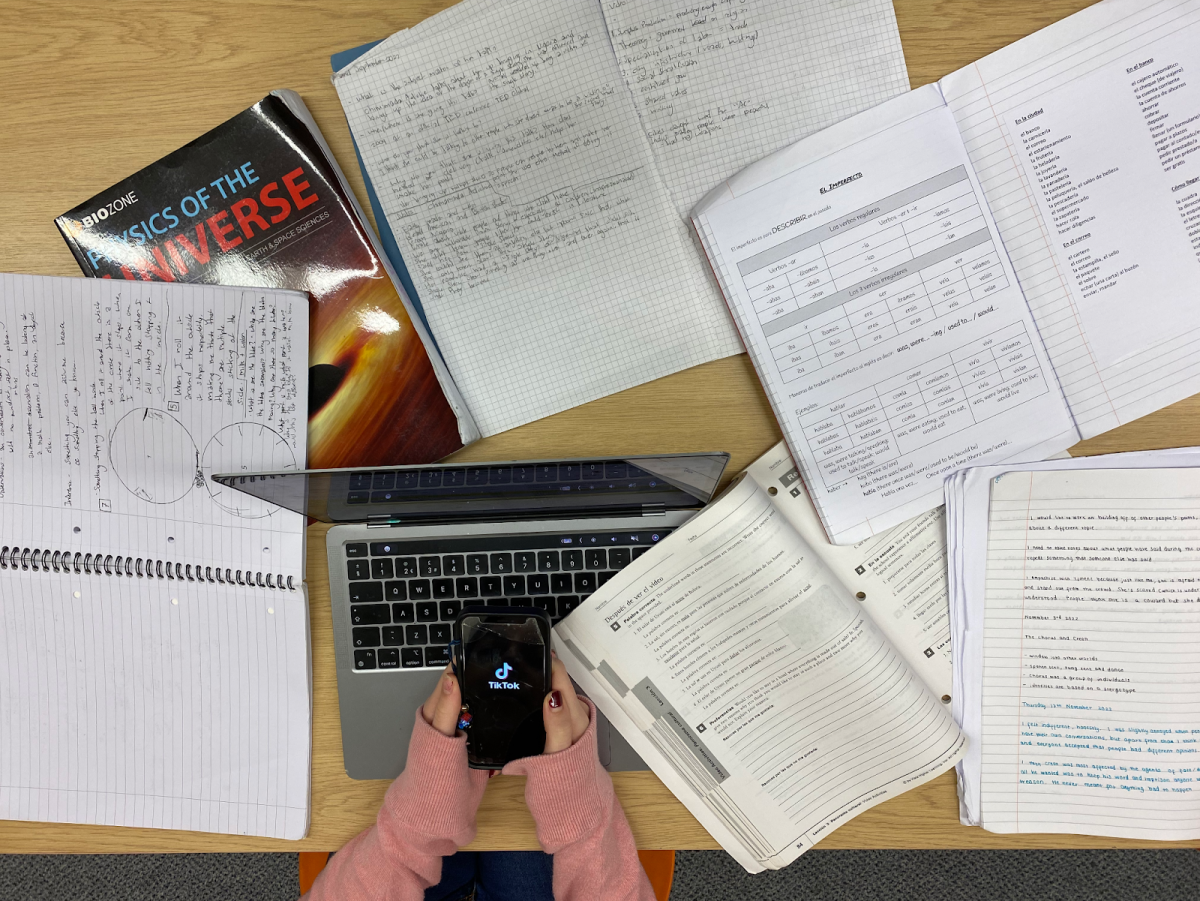I am sitting at my desk, trying to finish an assignment due tomorrow. When my phone buzzes, I force myself to look away, fighting the urge to pick it up. It always fails. I tell myself it’s just a quick minute and that I’ll finish later. However, next thing I know, it’s been an hour, and I’ve just wasted my time switching from app to app: Snapchat, Tik Tok, Instagram. No matter what I do, it feels like I can’t stop.
Phones and short forms of media play the most important role in high school students’ decreasing attention spans.
Social media platforms like TikTok and Instagram are designed to make our brains adapt to only receiving small and short forms of media at once. Some examples are reels, TikTok posts, Instagram stories and YouTube shorts. According to Hurrdat Marketing, short forms of media can be defined as content that is under 10 minutes or 1200 words. The danger with this is that media platforms can become highly addictive. From personal experience, when I am faced with long, complex and wordy texts, tasks, or lectures, my brain doesn’t know how to process them as well anymore.
Whenever something bores us on social media, we have the choice to scroll aimlessly, but this isn’t an option in real life. Endless algorithmic content makes it increasingly difficult for students at school to stay focused and on task, as they aren’t accustomed to such intense levels of concentration. According to a survey conducted by the Pew Research Center, 31% of teens said they lost focus in class because they were checking their cell phones, and 49% said using technology for reasons unrelated to class, or “off-task” use, was distracting to them. Concerningly, according to research conducted by Microsoft, we have a shorter attention span than a goldfish. That is less than 9 seconds.
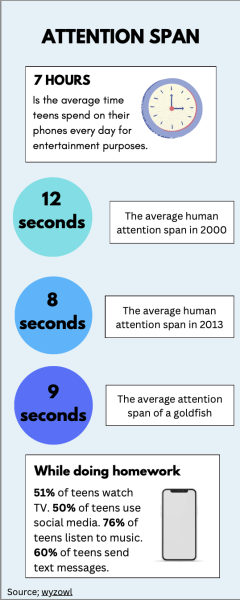
Even when we are not using a phone, constant distractions are causing our attention spans to decrease. There are distractions everywhere you look, and it is too easy to start thinking about something else. “What am I going to wear,” “What should I eat tonight,” “Where should I go this weekend” and “I wonder who texted me” are thoughts that race through my brain, in part because these are often the focus of social media posts and its demonstration of a glamorized lifestyle.
Books have become harder to read, we get upset when having to redo something more than once, memorizing information has become more challenging, and giving up seems to be getting easier by the day, as reported by the Pew Research Center study.
A study by the National Institutes of Health found that teenagers who spend over two hours a day on their screens receive lower test scores. I find myself reading fewer books than I used to, mainly because I can’t keep focused and get bored after the first 10 pages as my patience levels have become increasingly low. I now usually gravitate more toward TV shows rather than movies and even then, I multitask while watching.
However, there might be more to this. The average attention span is pretty meaningless; it’s more task-dependent. The attention we put into an assignment will vary depending on the task.
For example, if a student has to study for a big science test, but science is their least favorite subject, they will spend less time and effort studying. On the other hand, if a student has to study for a math exam, and math is their favorite subject, their attention span and the amount of effort they’ll put into studying will be significantly greater.
Another example is if a teenager has to watch an hour-long documentary for a project: chances are they won’t be able to sit through it while actively listening and understanding fully. But, if a teenager is playing their favorite video game with their best friend, they most likely will be able to fully focus and participate for a full hour without getting distracted or bored.
According to Dennis Buttimera, the life and wellness coach for Thomas F. Chapman Family Cancer Wellness at Piedmont, when the notification bell pings, it gives your body a sudden adrenaline rush, triggering stress hormones such as cortisol. However, in the short term, notifications can trigger dopamine, the “reward” neurotransmitter, according to Bustle. When dopamine is released in the brain, it makes us feel happier. This is why we constantly wait for the next notification on our phones, making us more vulnerable to distraction.
Teenagers’ attention spans are dropping faster than ever, and have huge impacts on our everyday lives. I recommend self-regulating the amount of time we spend on social media. We should also turn off our phones or put them in separate rooms when doing work and take short breaks every so often when working to help keep our brains engaged.

